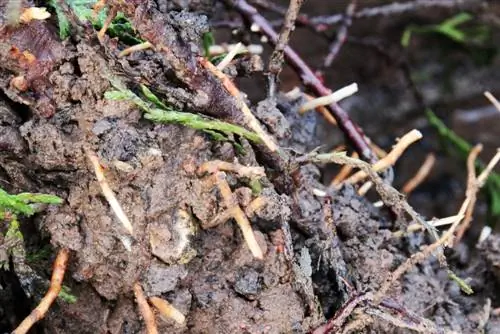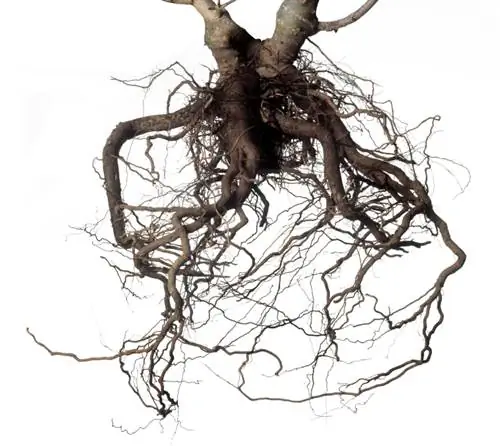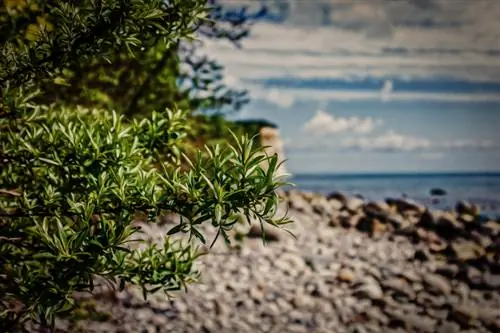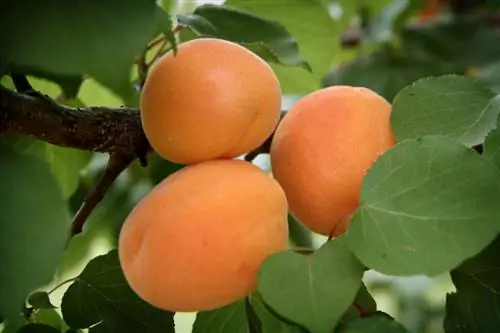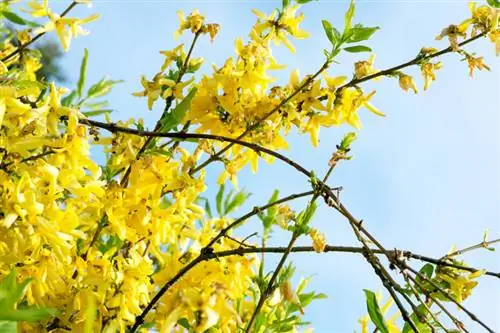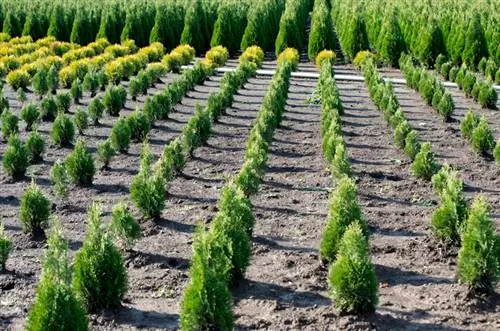- Author admin [email protected].
- Public 2023-12-16 16:46.
- Last modified 2025-06-01 06:02.
As long as the tree of life grows he althy and beautifully green in the garden, the roots don't play a big role. Things only get difficult when you want to transplant an arborvitae or clear a thuja hedge. What do you need to know about the roots of thuja?
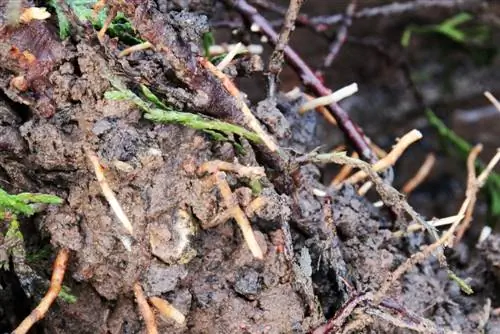
What are the roots of a Thuja like?
The roots of the thuja are shallow, which means they do not penetrate deep into the ground, but spread laterally. If necessary, they can be dug up or left to rot in the ground, although transplanting older specimens is difficult.
Thuja - shallow-rooted or deep-rooted?
Thuja is a shallow-rooted plant. This means that the rootstock does not dig too deeply into the ground. To do this, it spreads wide laterally and forms many small root shoots. The roots in the hedge grow into each other, making it difficult to remove the individual trees.
As a shallow rooter, you can plant the tree of life without worrying about the roots destroying supply lines in the ground. However, over time, the lateral roots can lift patio slabs and sidewalks.
Identify and treat root rot
Thuja is a robust plant for the hedge, but the roots are quite sensitive. They tolerate neither dryness nor too much moisture.
If there is waterlogging, there is a risk that root rot will spread. It is triggered by fungal spores and promoted by moisture. The fungal disease is manifested by the fact that the trunk develops whitish spots and the shoots of the Thuja dry out.
Root rot is difficult to treat. The thuja usually dies completely. You should then get the roots out of the ground as much as possible and replace the soil.
Dig up the roots of the thuja
Digging up the roots of an older thuja requires a lot of strength and time. If this is too much effort for you, you should hire a specialist company to do the clearing.
- Cut the tree of life back to the remains of the trunk
- Dig up earth
- Dig the soil around Thuja
- cut lateral roots with scissors or saw
- Pulling roots out of the ground
First cut the tree of life back to a longer piece of trunk. Then remove the soil down to the roots. Use the spade to dig into the ground all around and cut or saw off the roots that protrude above.
Place a digging fork (€31.00 on Amazon) as far as possible under the rootstock and lift it up. With an old thuja, you can use a winch that you tie to the remaining trunk.
Allowing roots to rot in the ground
If it's too much effort for you to get the roots of the arborvitae hedge out of the ground, just let them rot in the ground.
Cut down the tree of life as much as possible. Drill holes in the roots that are in the ground. Add compost or compost starter. Then the roots will rot faster.
The location cannot be replanted if you leave the roots in the ground. But you can fill a thick layer of topsoil on top and at least sow lawn.
Tip
The roots of the thuja are very sensitive. A tree of life cannot therefore be transplanted so easily - at least when it is older.

